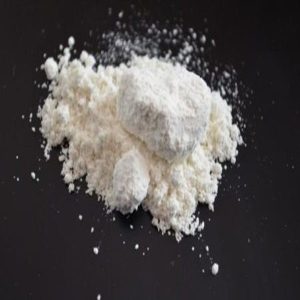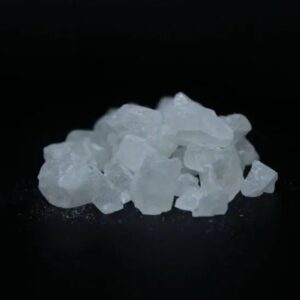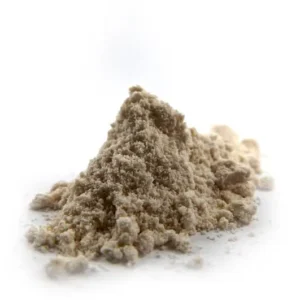DISSOCIATIVES
Dissociatives: Understanding the Effects, Risks, and Uses
Dissociatives are a class of psychoactive substances that alter perception, consciousness, and cognition, often causing a sense of detachment from reality. These substances have unique effects on the brain, making them distinct from other drug categories such as stimulants or depressants.
In this article, we’ll explore what dissociatives are, their mechanisms of action, common types, therapeutic applications, risks, and societal implications.
What Are Dissociatives?
Dissociatives are substances that disrupt the normal functioning of the brain, specifically by inhibiting the N-Methyl-D-aspartate (NMDA) receptor, a critical component in neural communication. This inhibition results in altered sensory perceptions, a sense of detachment, and sometimes a dreamlike state.
Key Characteristics:
-
Altered Reality: Users may feel disconnected from their body or surroundings.
-
Sedative Effects: Some dissociatives induce sedation or drowsiness.
-
Hallucinatory Experiences: Visual and auditory distortions are common.
How Do Dissociatives Work?
Dissociatives primarily affect the NMDA receptor in the brain, which plays a vital role in learning and memory. By blocking these receptors, dissociatives slow down neural activity, leading to the characteristic dissociative state.
In addition to NMDA receptor antagonism, some dissociatives interact with opioid receptors or serotonin pathways, further influencing their effects.
Common Types of Dissociatives
There are several dissociative substances, each with distinct effects and risks:
-
Ketamine
-
Originally developed as an anesthetic.
-
Now used in low doses for treatment-resistant depression.
-
Effects: Euphoria, detachment, and vivid hallucinations.
-
-
Phencyclidine (PCP)
-
A powerful dissociative known for its unpredictable effects.
-
Effects: Hallucinations, aggression, and psychosis.
-
-
Dextromethorphan (DXM)
-
Found in over-the-counter cough medicines.
-
Effects: Sedation, altered perceptions, and euphoria at high doses.
-
-
Nitrous Oxide
-
Commonly known as “laughing gas.”
-
Effects: Short-lasting euphoria and detachment.
-
-
Salvia Divinorum
-
A plant-based dissociative used for spiritual experiences.
-
Effects: Intense but short-lived hallucinations.
-
Therapeutic Uses of Dissociatives
Dissociatives have found a place in modern medicine and therapy due to their unique properties:
-
Ketamine Therapy: Used to treat severe depression, PTSD, and chronic pain. It is administered under controlled conditions for fast-acting relief.
-
Anesthesia: Ketamine is still widely used in surgeries, especially for children and animals.
-
Pain Management: Some dissociatives help in managing acute and chronic pain.
Risks and Side Effects
While dissociatives can have therapeutic benefits, their recreational use carries significant risks:
Physical Risks:
-
Increased heart rate and blood pressure.
-
Impaired motor coordination.
-
Potential for respiratory depression.
Psychological Risks:
-
Confusion and memory impairment.
-
Anxiety or paranoia during use.
-
Risk of psychosis with long-term use.
Addiction and Dependence:
Certain dissociatives, such as ketamine and DXM, can lead to psychological dependence. Prolonged use may also cause bladder and kidney damage, particularly with ketamine.
Legal Status of Dissociatives
The legal status of dissociatives varies globally:
-
Ketamine: Classified as a controlled substance in many countries but allowed for medical use.
-
PCP: Banned in most jurisdictions due to its high abuse potential.
-
DXM: Available over the counter but regulated in some areas.
Understanding local regulations is crucial for both therapeutic and recreational users.
Harm Reduction Tips
If you or someone you know is considering using dissociatives, follow these harm reduction strategies:
-
Start with Low Doses: The effects can be unpredictable.
-
Stay in a Safe Environment: Dissociatives impair motor skills and judgment.
-
Have a Sober Companion: They can assist if adverse effects occur.
-
Avoid Mixing Substances: Combining dissociatives with alcohol or other drugs increases risks.
Conclusion
Dissociatives are a fascinating class of psychoactive substances with diverse applications and effects. While they offer significant therapeutic potential, especially in mental health treatment, their misuse carries substantial risks. Education and harm reduction are essential for minimizing these risks and maximizing their benefits.
If you’re curious about dissociatives for medical use, consult a healthcare professional. For recreational users, staying informed and practicing harm reduction is vital.
FAQs About Dissociatives
1. Are dissociatives addictive?
Some dissociatives, like ketamine, can lead to psychological dependence with frequent use.
2. Can dissociatives be fatal?
While dissociatives are less likely to cause overdose fatalities than opioids, high doses or mixing substances can be dangerous.
3. What are the long-term effects of dissociative use?
Chronic use may lead to cognitive impairment, bladder issues (ketamine bladder syndrome), and mental health challenges.
4. Is ketamine legal for depression treatment?
Yes, ketamine is legally used in clinical settings for treatment-resistant depression in many countries.
5. How can I safely explore dissociatives?
Research thoroughly, use in moderation, and always prioritize safety and legality.
Showing all 9 results
-
DISSOCIATIVES
Buy 2-FDCK Hydrochlorid Online
€90.00 – €740.00Clear5grams10grams20grams50grams100grams -
DISSOCIATIVES
Buy 3-MEO-PCE Hydrochlorid Online
€80.00 – €1,320.00Clear2grams5grams10grams20grams50grams100grams -
DISSOCIATIVES
Buy 4-HO-DPT Hydrochlorid Online
€90.00 – €1,960.00Clear1gram2grams5grams10grams20grams50grams100grams









